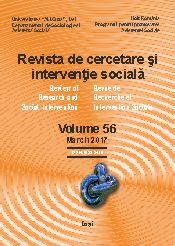RISK FACTORS AND RESILIENCE IN THE OFFSPRING
OF PSYCHOTIC PARENTS
RISK FACTORS AND RESILIENCE IN THE OFFSPRING
OF PSYCHOTIC PARENTS
Author(s): Laura Nussbaum, Alexandru Ogodescu, Lavinia Hogea, Liliana Nussbaum, Irina ZetuSubject(s): Studies in violence and power, Family and social welfare, Victimology
Published by: Expert Projects Publishing
Keywords: resilience; research-action; parenting;
Summary/Abstract: We approach an integrated research-action model of the interactions between the psychosis of the parent, parenting, family relations, the child’s development, risk and resilience factors. The research objectives are: identifying the resilience factors, the research of the interaction between the risk and resilience mechanisms, predicting or not the development of psychopathology in children of psychotic parents, the dynamic evaluation of the resilience. The longitudinal study was conducted in the period 2003-2013 on a group of 75 children with a schizophrenic parent and 70 children with a parent with bipolar disorder. We applied the scales: CBCL, Vth Axis ICD 10, PANSS and CD-RISC (Connor-Davidson Resilience Scale). Through PANSS for the psychotic parents, we correlated the scores for specific items with those obtained by the children through CD-RISC. Through MANOVA and the Pearson test we correlated the dependent variables with the predictive influence factors. The high PANSS scores for specific items were correlated negatively with the resilience scores of the children with psychotic parents. The maximum frequency of positive codifications on the Vth Axis, found for: rejection behavior from one parent (76, 4%), family disharmony (73, 52%), distorted family communication (70, 58%), was significantly correlated (p<0.001) with low scores of the child’s resilience for personal competency, negative effects tolerance, safe interpersonal relations, high performance. The social, family support and social connectedness proved to be relevant variables. Resilience can be modified and improved through targeted interventions, so that the understanding of the resilience process and of the concurrent factors is needed.
Journal: Revista de Cercetare şi Intervenţie Socială
- Issue Year: 2016
- Issue No: 56
- Page Range: 114-122
- Page Count: 10
- Language: English

